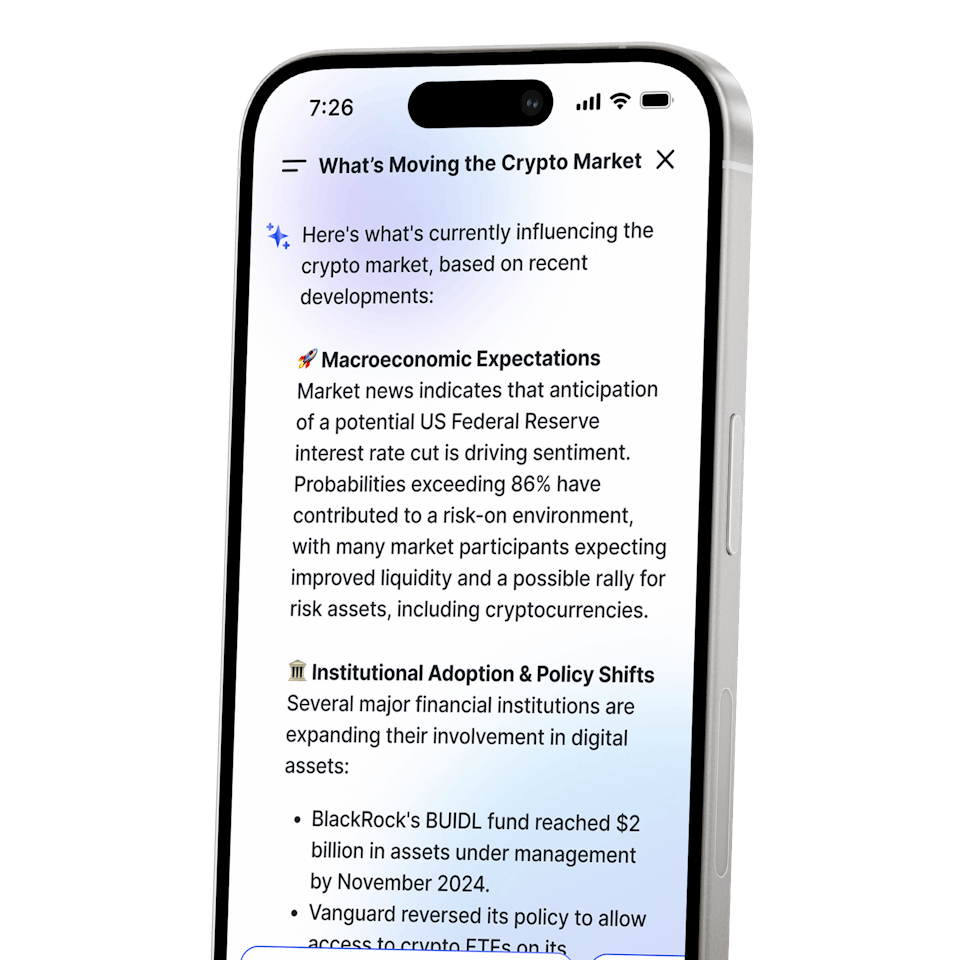Buy Polygon
Polygon
POL
Overview
What is Polygon?
Formerly MATIC, POL is the native cryptocurrency of the Polygon ecosystem.
What is Polygon (POL)?
So what is POL and what is it used for?
How does Polygon and POL work?
Imagine you’re at a busy train station, waiting for your regular local train (that’s Ethereum). But right next to it, there’s an express train called Polygon. It runs on the same tracks but makes fewer stops, so it moves much faster. That’s what Polygon is: A speedy parallel blockchain that works alongside Ethereum.
This is why it is called a Layer-2 Scaling Solution. Polygon is like a sidekick to Ethereum. It helps speed up transactions and reduces fees. Think of it as a shortcut for crypto transactions.
Polygon has become a hub for various fun crypto apps. It’s like a hangout spot where you can do more with your digital money.
What is POL? Is it a cryptocurrency?
POL is Polygon’s own cryptocurrency. When you use Polygon, you pay with POL. Holders of POL can become validators, which means they can “work” for the ecosystem, securing the network by checking transactions. This is called “staking”. In return, they earn more POL tokens.
POL holders also get to vote on changes to Polygon.
Polygon (POL) makes crypto life easier and faster. Polygon also claims to be carbon neutral, and hopes to be carbon positive soon.
Fun stuff in the Polygon ecosystem
Blockchain games are popular on Polygon.
At the time of writing, Yuliverse was topping the rankings for Polygon gaming dApps.
Yuliverse operates within a future cyberpunk world. It uses NFTs which players can buy and sell.
Another top Polygon game is Matr1x Fire. It is a mobile shooting game within the Metaverse that operates on the Polygon network. Matr1x Fire immerses players in a futuristic cyberpunk world with captivating visuals. The game’s art style combines neon lights, advanced technology, and dystopian elements.
Players take part in fast-paced shooting battles and players can combat for NFTs (non-fungible tokens) and digital art assets. These assets have appreciation potential and include avatars, weapons, profile pictures (PFPs), gloves, and other props. Collecting rare and valuable NFTs adds an interesting layer to the gameplay.
Polygon NFTs
NFTs can be created directly on Polygon or moved there from other blockchains.
Generally speaking, Polygon NFTs have low transaction fees and speedy transactions compared to Ethereum’s mainnet.
More well-known NFT collections include y00ts and Hell Cats. There are NFT marketplaces like OpenSea and Magic Eden on Polygon too. They are like NFT shopping malls where users can buy and sell these digital treasures.
Over 843 million NFTs have been minted (created) on the Polygon blockchain so far.
Spending POL in the Polygon Ecosystem
There are a lot of ways to use POL in the Polygon ecosystem. First, users have to connect to the POL Bridge. This just means that you can move your digital assets between Ethereum and Polygon networks.
Once funds are on Polygon, users can explore over 19,000 decentralised applications (dApps). Users will need POL to pay for transaction fees (gas) within the Polygon ecosystem.
Is Polygon (POL) a good investment?
Polygon is a growing ecosystem of dApps, NFT projects, and DeFi platforms. Many projects are integrating with Polygon to leverage its benefits. In this way, POL is expected to grow in usage, but always do your own research to ascertain if POL is right for you.







Cash, credit or crypto?
Buy Polygon instantly using Visa or Mastercard. Get cash in your account fast with bank transfer, PayID or Osko. Convert crypto-to-crypto with a single click.How to buy Polygon with CoinJar
Start your portfolio with Australia's longest running crypto exchange with these simple steps.Featured In


CoinJar Card
CRYPTO SPENDING POWERED BY MASTERCARD®
CoinJar Card
CRYPTO SPENDING POWERED BY MASTERCARD®
CoinJar DCA & Bundles
AUTOMATE & DIVERSIFY YOUR PORTFOLIOCoinJar DCA & Bundles
AUTOMATE & DIVERSIFY YOUR PORTFOLIO

CoinJar Exchange
TRADE FOR AS LOW AS 0%
CoinJar Exchange
TRADE FOR AS LOW AS 0%
CoinJar AI
A portfolio and market assistant built into CoinJarCoinJar AI
A portfolio and market assistant built into CoinJar
Your information is handled in accordance with CoinJar’s Collection Statement.
CoinJar’s digital currency exchange services are operated by CoinJar Australia Pty Ltd ACN 648 570 807, a registered digital currency exchange provider with AUSTRAC.
CoinJar Card is a prepaid Mastercard issued by EML Payment Solutions Limited ABN 30 131 436 532 AFSL 404131 pursuant to license by Mastercard. CoinJar Australia Pty Ltd is an authorised representative of EML Payment Solutions Limited (AR No 1290193). We recommend you consider the Product Disclosure Statement and Target Market Determination before making any decision to acquire the product. Mastercard and the circles design are registered trademarks of Mastercard International Incorporated.
Google Pay is a trademark of Google LLC. Apple Pay is a trademark of Apple Inc.
This site is protected by reCAPTCHA and the Google Privacy Policy and Terms of Service apply.










